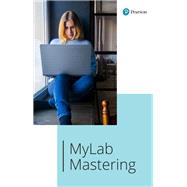For courses in introductory statistics.
This is the 24-month standalone access card for MyLab Statistics.
The art and science of learning from data
Statistics: The Art and Science of Learning from Data takes a conceptual approach, helping students understand what statistics is about and learning the right questions to ask when analyzing data, rather than just memorizing procedures. This book takes the ideas that have turned statistics into a central science in modern life and makes them accessible, without compromising the necessary rigor. Students will enjoy reading this book, and will stay engaged with its wide variety of real-world data in the examples and exercises.
The authors believe that it’s important for students to learn and analyze both quantitative and categorical data. As a result, the text pays greater attention to the analysis of proportions than many other introductory statistics texts. Concepts are introduced first with categorical data, and then with quantitative data. The 5th Edition enhances the student and instructor experience and provides a more accessible introduction to statistical thinking and practice.
Personalize learning with MyLab Statistics
MyLab™ Statistics is the teaching and learning platform that empowers you to reach every student. By combining trusted author content with digital tools and a flexible platform, MyLab Statistics personalizes the learning experience and improves results for each student. With MyLab Statistics and StatCrunch®, integrated web-based statistical software, students learn the skills they need to interact with data in the real world.
0136679129 / 9780136679127 MYLAB STATISTICS WITH PEARSON ETEXT -- STANDALONE ACCESS CARD -- FOR STATISTICS: THE ART AND SCIENCE OF LEARNING FROM DATA -- 24 MONTHS, 5/e











